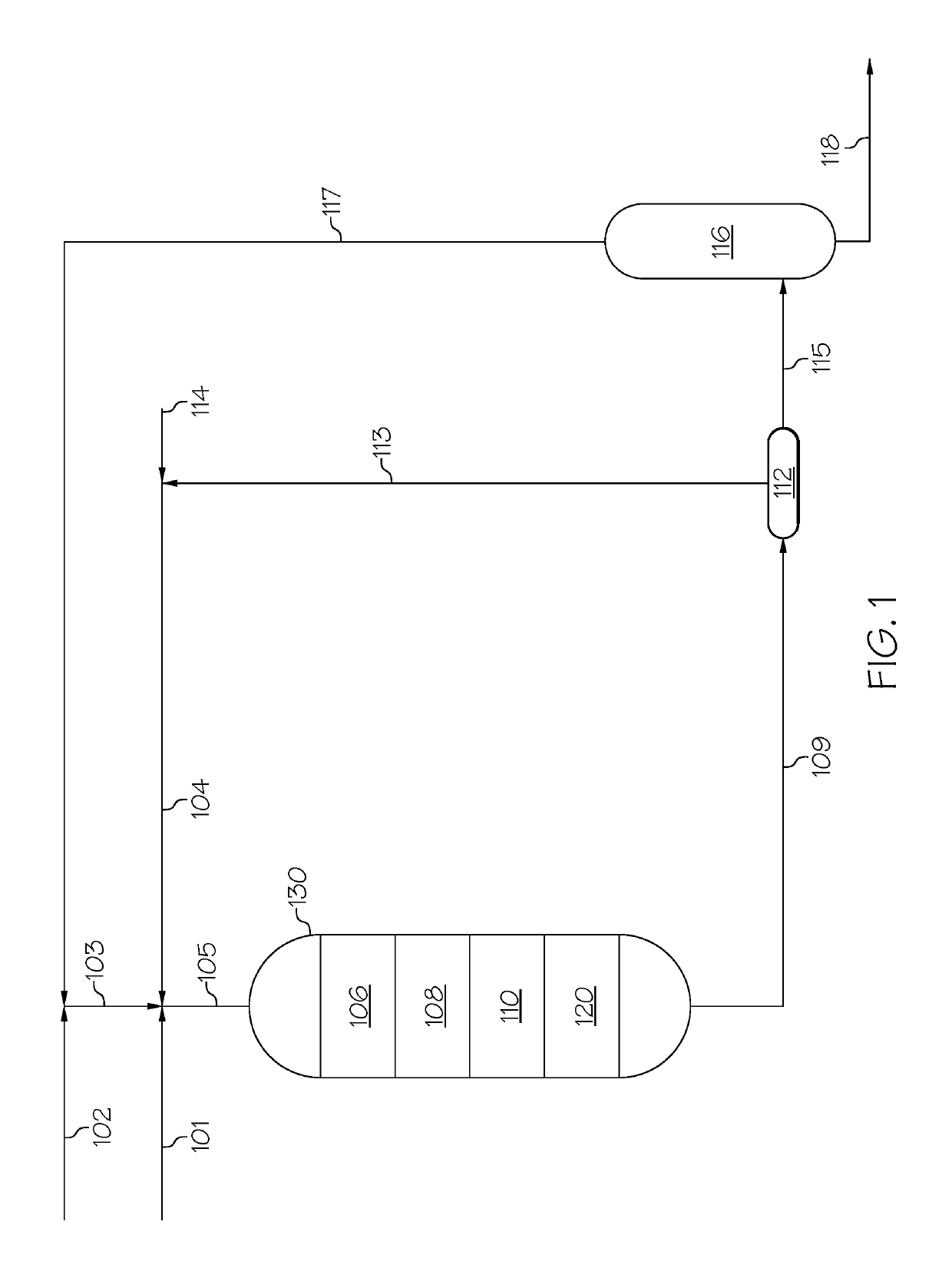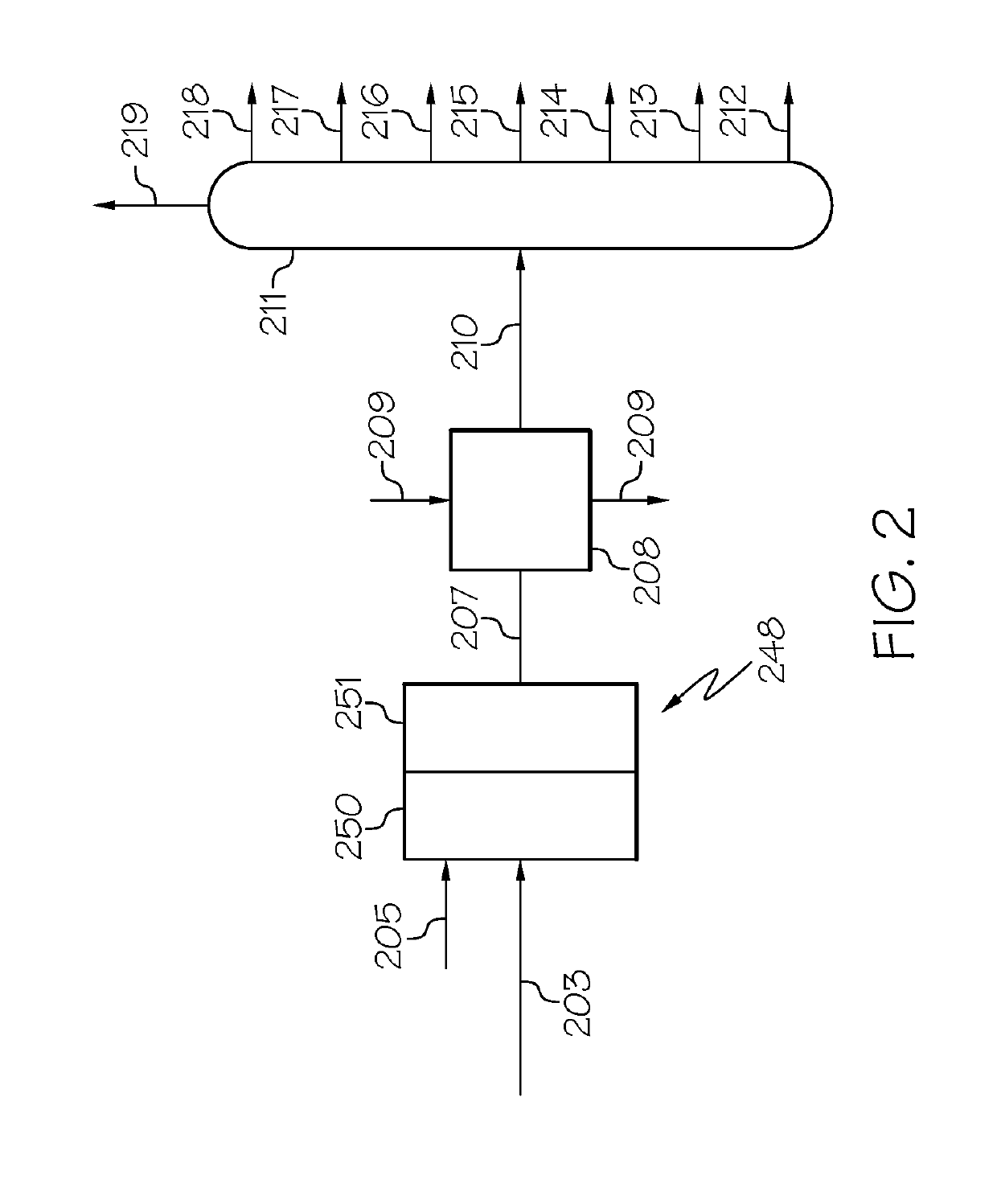Zeolites, the production thereof, and their uses for upgrading heavy oils
a technology of heavy oil and zeolites, which is applied in the field of zeolites, can solve the problems of increasing coking, steam cracking of heavy oil to form undesirable products, and relatively low light olefin content, and achieves the effect of low cost and less expensiv
- Summary
- Abstract
- Description
- Claims
- Application Information
AI Technical Summary
Benefits of technology
Problems solved by technology
Method used
Image
Examples
example 1
of Presently Disclosed Mesoporous Zeolite Y
[0078]NaY zeolite was NH4+ ion-exchanged with NH4NO3 (at 90° C. for 1 hour) to produce NH4NaY zeolite (where Na content was 2-4 wt %). Deionized water was added to the NH4NaY zeolite and heated to 80-90° C. Under the stirring, an (NH4)2SiF6 aqueous solution was drop added in 1-3 hours to the NH4NaY zeolite in the deionized water to form a slurry. This slurry was maintained at 80-95° C. for 1-2 hours. The slurry was then decanted. The top zeolite was washed two times with deionized water. The cake following the decanting was NH4+ ion-exchanged with NH4NO3 (at 90° C. for 1 hour). This ion-exchanged cake was then optionally processed by hydrothermal treatment under 500-600° C., 0.1-0.3 MPa steam pressure for 1-3 hours. NaOH and Cetrimonium bromide (CTAB) were added to the ion-exchanged and optionally hydrothermally treated cake, where the CTAB / zeolite weight ratio was 0.1-1.5. The NaOH concentration was in the range of 0.05-2M. This mixture wa...
example 2
ization of the Presently Disclosed Mesoporous Zeolite Y
[0079]The mesoporous zeolite Y was synthesized as described in Example 1, and studied in lab. The main properties of the zeolites were characterized by BET, XRD, etc. Tables 2, 3, 4A, 4B, and 5 provide information regarding various zeolites formed from different reaction conditions and compositional variation.
[0080]The effect of solution media (H2O, NH4Cl, or NH4NO3) on (NH4)2SiF6 treatment is shown in Table 2. The solution media refers to the media in which the zeolite is in when contacted by the (NH4)2SiF6, including any media combined with the zeolite prior to contact with the (NH4)2SiF6 or any media mixed with the (NH4)2SiF6 when added to the zeolite. The column listing “NH4NaY” signifies the properties of the zeolite prior to contact by the (NH4)2SiF6.
[0081]
TABLE 2NH4NaYH2OH2O + NH4NO3H2O + NH4ClNa2O, wt %3.70.090.731.2SiO2 / Al2O3,5.111.910.510.4molar ratioCell unit, Å24.6724.5024.4724.47Relative100878385crystallinity, %
[008...
example 3
on and Characterization of Zeolite Y with and without Hydrothermal Treatment
[0085]Additionally, experiments were performed to measure various properties of fabricated zeolite Y to study the effect of hydrothermal treatment during mesoporous zeolite fabrication. Before (NH4)2SiF6 treatment, the NH4+ exchanged zeolite Y was hydrothermally treated under 550° C. and 0.1 MPa of auto-generated steam pressure for 1 hour in some samples, as shown in Table 4A. Sample 1 was a NH4+ exchanged commercially available zeolite Y (CBV-100 available from Zeolyst International). Sample 2 is representative of Sample 1 with additional hydrothermal treatment as described. Samples 3 and 4 represent the zeolites of Samples 1 and 2 following the (NH4)2SiF6 treatment, respectively. Additionally, the conditions and comparison results between the various samples are summarized in Table 4A.
[0086]
TABLE 4ASample NameSample 1Sample 2Sample 3Sample 4Starting zeolite and treating processNH4+Sample 1 +Sample 1 +Sampl...
PUM
| Property | Measurement | Unit |
|---|---|---|
| temperature | aaaaa | aaaaa |
| wt. % | aaaaa | aaaaa |
| wt. % | aaaaa | aaaaa |
Abstract
Description
Claims
Application Information
 Login to View More
Login to View More - R&D
- Intellectual Property
- Life Sciences
- Materials
- Tech Scout
- Unparalleled Data Quality
- Higher Quality Content
- 60% Fewer Hallucinations
Browse by: Latest US Patents, China's latest patents, Technical Efficacy Thesaurus, Application Domain, Technology Topic, Popular Technical Reports.
© 2025 PatSnap. All rights reserved.Legal|Privacy policy|Modern Slavery Act Transparency Statement|Sitemap|About US| Contact US: help@patsnap.com


